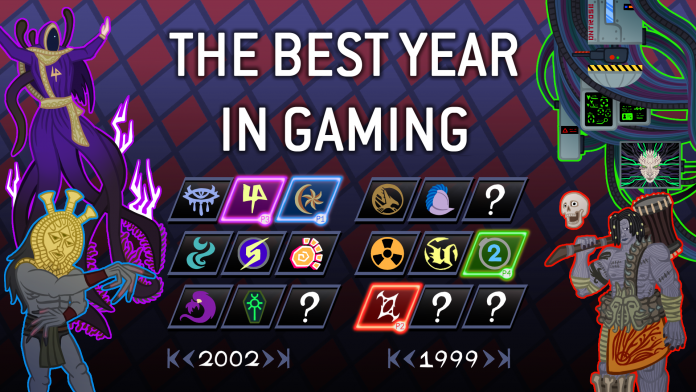Last year’s stacked lineup of games for the Game Awards had us thinking: What was the best year in gaming? As part of our series on determining gaming’s best year, we’re putting together an article on each year, charting the major releases and developments of the year, and talking about both their impact and what made them great.

The Year: 1999
It’s 1999. Tensions mount over the effects Y2K will have on computer software. The PlayStation2 is still a year away and in the meantime the Dreamcast launches in the United States to a less than stellar reaction, but it’s not unsalvageable… yet. The Nintendo 64 is still plugging along, and while the console is heavily reliant on first-party titles it does have one particular exclusive third-party franchise no one else has and that’s THQ’s wrestling games. We’ll come back to that one.
The Matrix hits theaters in March 1999, changing the face of movies and video games. The movie’s innovative “bullet time” scenes eventually show up in games, first in Max Payne and then later in imitators and innovators to follow, including the likes of The Legend of Zelda: Breath of the Wild. The movie and its sequels eventually spawn their own game series, including an MMO with some wild consequences for the movie plots.
Pokémania is still running strong, and the show and the card game are massive hits worldwide. In the fall Game Freak will put out a sequel, Pokémon Gold/Silver, which expands on the original by adding another attached region and a hundred or so additional monsters.
But the real story of 1999? PC Gaming. PC game development had matured and grown throughout the 90s and in 1998 finally exploded onto the scene as a legitimate force to rival consoles. Home computers had become much more affordable, with hardware that had become easier to modify and swap out. Windows 98 had become the de facto platform for games, making it easier to access a massive library of titles, while 3Dfx’s Voodoo graphics cards revolutionized the industry nearly overnight, bringing 3D graphics to home computers. On top of that, internet play had finally become accessible – the costs of internet access had steadily dropped to more manageable monthly costs and by 1999 we were starting to see higher-speed connections become widespread as ISDN connections became more common and students at universities could take advantage of their schools’ T1 connections to reduce latency and make more complicated multiplayer games viable. As a result, many of the biggest games between 1998 and 2000 are PC games.
Hasbro Buys Wizards of the Coast
Despite the success of Pokémon, Magic: the Gathering was still the world’s most popular CCG. But that hardly mattered to them because Wizards was also publishing the Pokémon Trading Card Game in the United States, so they had every base covered in that regard. Hasbro had previously looked at acquiring Wizards of the Coast a few years prior as Magic took off, but balked at the cost at the time. In 1999 Hasbro had secured the license to produce the Pokémon toy line and it suddenly made a lot more sense to acquire the company, particularly after the work Wizards had done to rehabilitate TSR and the Dungeons & Dragons brand. In short, this was as valuable as the company was ever going to be and it made a ton of sense for them to sell high – and so they did, for about $325 million. Hasbro then moved their Avalon Hill brand under Wizards and let the company continue to run semi-autonomously for another two years.

The Second Generation of MMORPGs Hit
When Ultima Online released in 1997 sales were initially slow and the game wasn’t expected to be a hit – after all, the Ultima franchise was hardly a best seller. Then the game quickly picked up steam up steam as players flocked to the game in large numbers, eager to join in on the game’s massive world, and UO became one of the fastest-selling PC games of all time. So it was natural that companies would rush to emulate its success. In 1999 two key challengers emerged: EverQuest and Asheron’s Call. Both were fantasy MMORPGs, both were released in March, and all three would fight to dominate the landscape until World of WarCraft released.
EverQuest in particular quickly built a large audience for itself and had a surprising amount of staying power. Both games were successful enough to mark that MMORPGs weren’t going anywhere; in fact, they were just getting started.
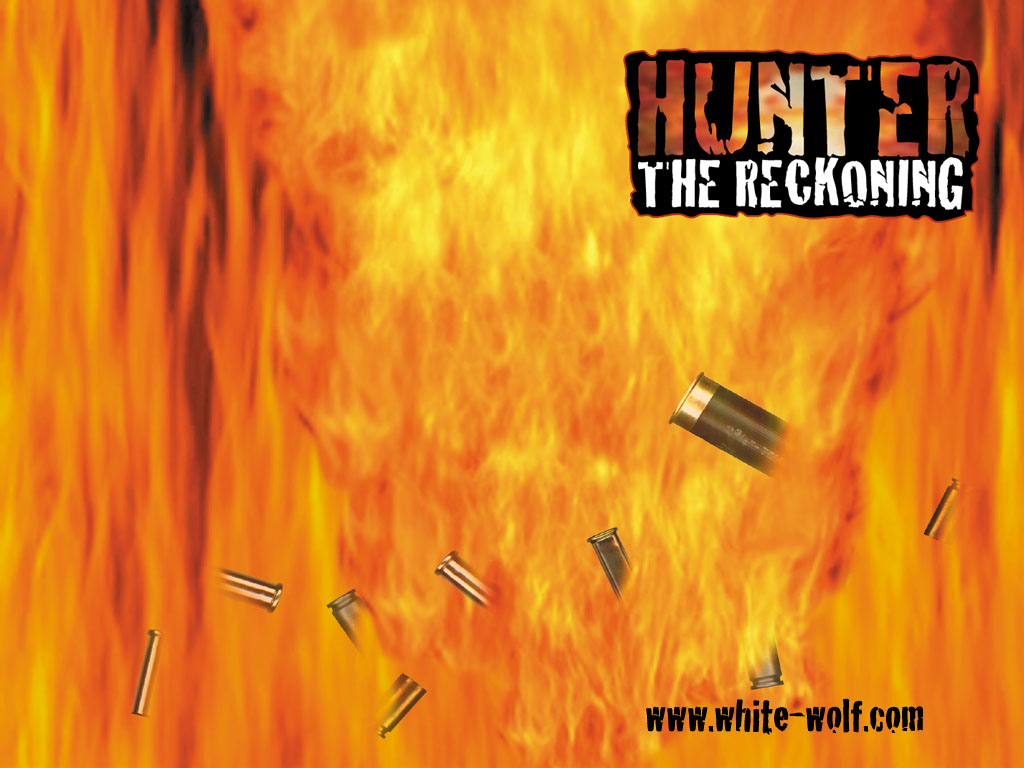
Hunter: the Reckoning
The penultimate game in White Wolf’s World of Darkness, Hunter: the Reckoning has players assume the role of Hunters, regular people who are awakened one day to the monsters – ghouls, ghosts, vampires, werewolves, mages, etc. – living in the shadows around them. Imbued with powers beyond their understanding, they’re charged with taking back the earth as the end of days approaches. Hunter had an incredibly evocative setting, kind of like playing a tabletop version of the movie Frailty. At its best it’s a wonderful game about not going gently into that good night while trying to maintain whatever grip you can on your character’s humanity and sanity.
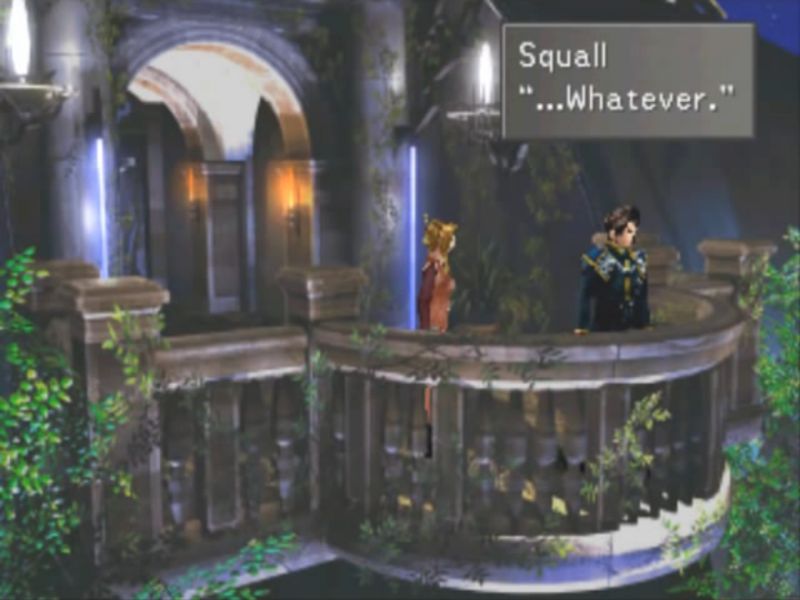
Final Fantasy VIII
Although not as beloved as its predecessor, Final Fantasy VIII actually sold better. Mechanically, FFVIII took some risks, introducing a controversial draw system for gaining spells and magic while doing away with the need for grinding by having enemies scale with the player. FFVIII goes off the rails toward its end but has an incredible set-up with one of the strongest intros of a Final Fantasy. The game has a killer soundtrack, some solid characters, and one of the best minigames ever put in a Final Fantasy. The battle between gardens is one of my favorite video game sequences ever.
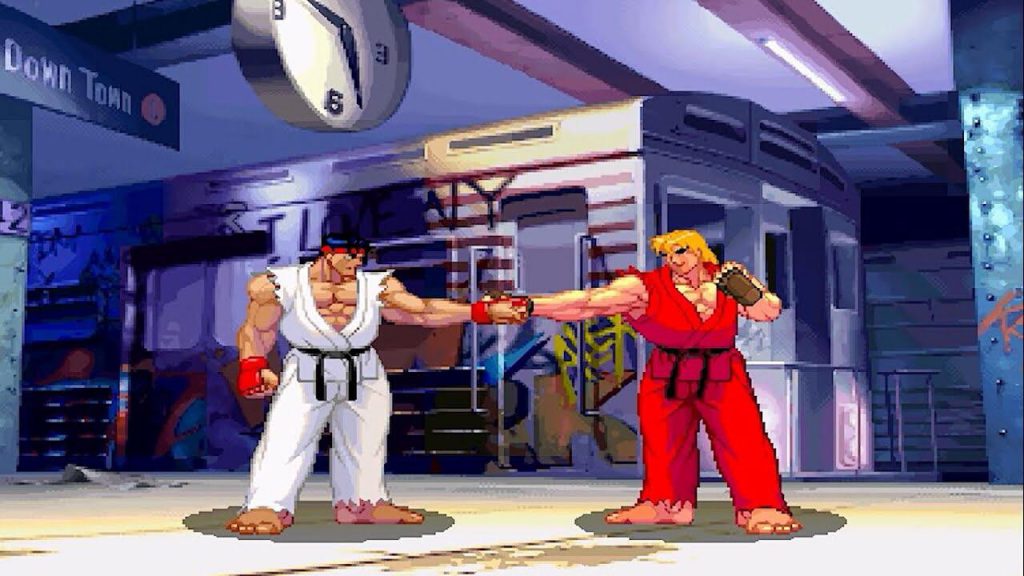
Street Fighter III: Third Strike
Capcom’s original release of Street Fighter III: A New Generation didn’t do so hot, struggling with slow sales as the US arcade market cooled and enthusiasm for 2D fighters died down. That’s a shame, because Street Fighter III has the smoothest sprite animation ever put in a game. Capcom would go back to the drawing board one more time before getting it right with their third release of the game. Third Strike gives us the biggest roster yet for the game, along with new stages. Street Fighter III is one of the best fighting games of all time (and it’s responsible for the most famous fighting game moment of all time – IFYKYK), and Third Strike is the best version of it.
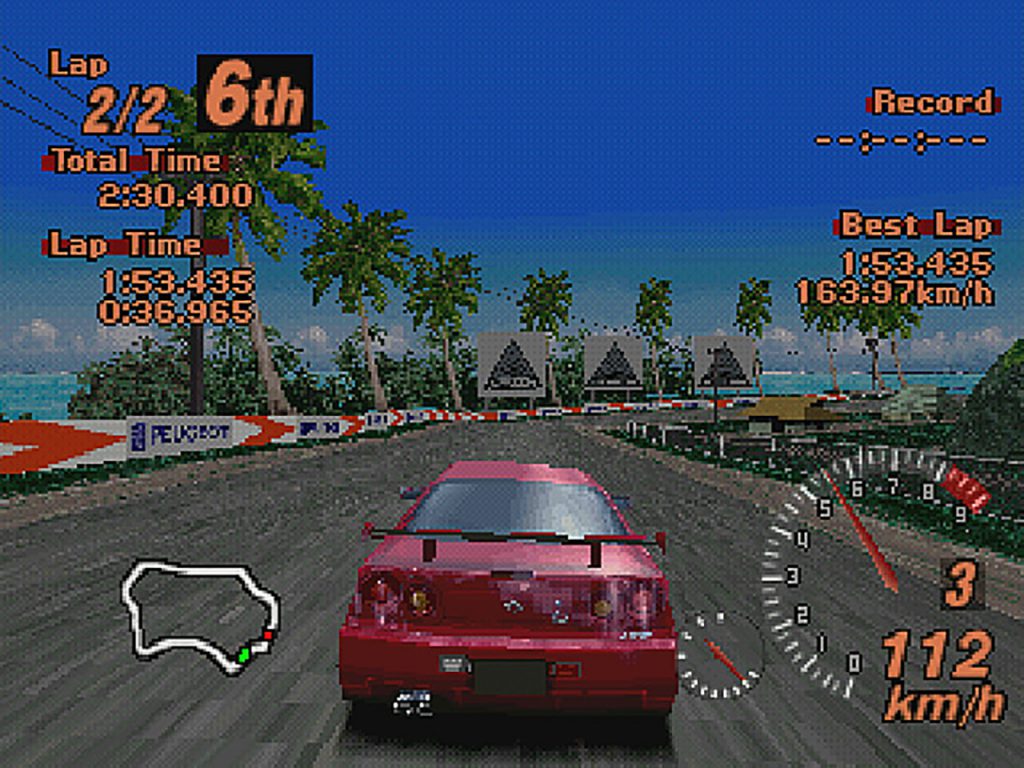
Gran Turismo 2
The even cooler sequel to the coolest racing game ever made, Gran Turismo 2 added more cars, more tracks, and rally cars and dirt tracks to the mix. It’s one of the best racing games ever made and a worthy successor to the first.

Legacy of Kain: Soul Reaver
The story behind the troubled development of Legacy of Kain: Soul Reaver could fill a book (or a video essay; there are a couple out there worth watching), but suffice to say Crystal Dynamics took the series in a different direction from the one Silicon Knights had intended with Soul Reaver. Switching from the vampire Kain to his vampire lieutenant Raziel hundreds of years after Kain chose the bad ending in the first game, Soul Reaver puts players on a bloody path to vengeance. It carries on Blood Omen’s tradition of outstanding voice acting and a wonderful, Shakespearean story and has some solid platforming mechanics and interesting enemy combat mechanics.
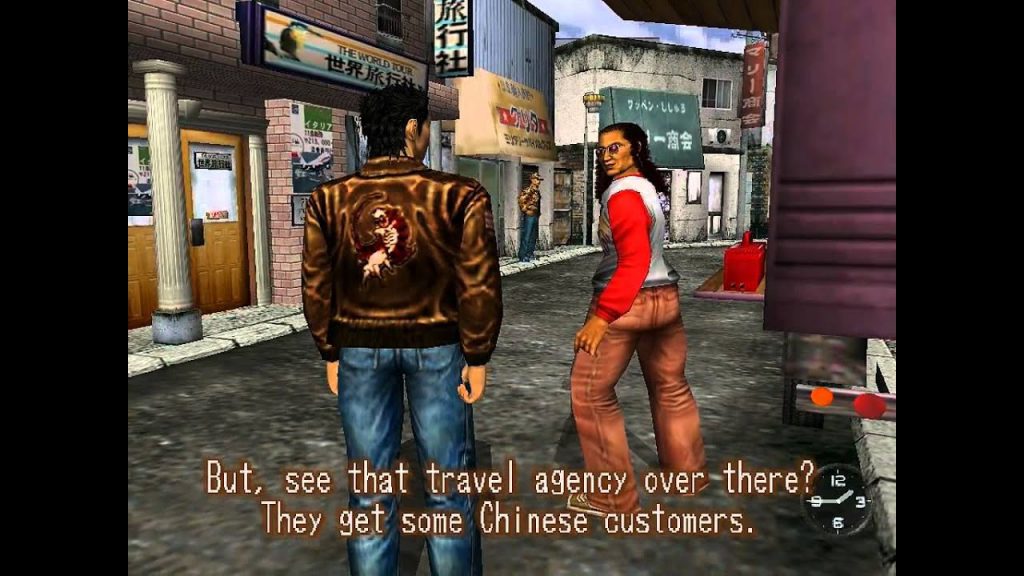
Shenmue
While not the most popular game released for the Dreamcast, Shenmue was likely the biggest and most important. Developed by Sega’s AM2 dvision, Shenmue put players in the role of Ryo Hazuki in an open world as he attempts to track down his father’s murderer. The game feels as much like a “living” sim as it does a game, and would popularize the concept of quick-time events in games. It’s sprawling and ambitious and while it doesn’t quite come together in full, it’s still one of the most important games of the year and has become a cult classic.
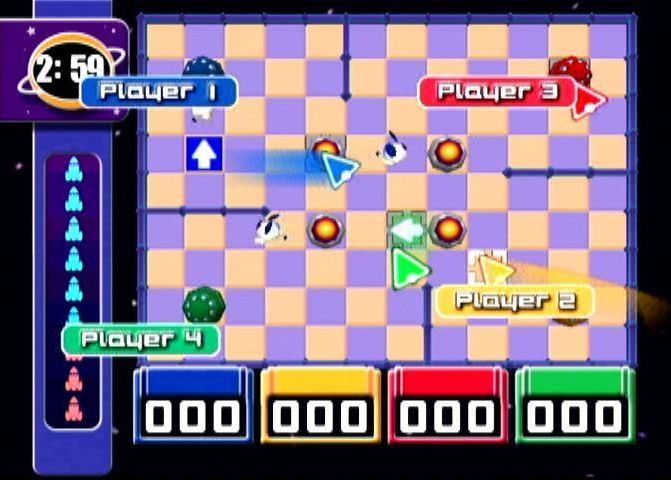
ChuChu Rocket!
The first game on the Dreamcast to support online play, ChuChu Rocket! is a wonderful puzzle/party game in which players attempt to guide mice called Chus to their respective rockets using arrow tiles they place on the board. It’s a wonderfully innovative and addictive game and it’s a travesty it never saw an updated release on modern consoles.
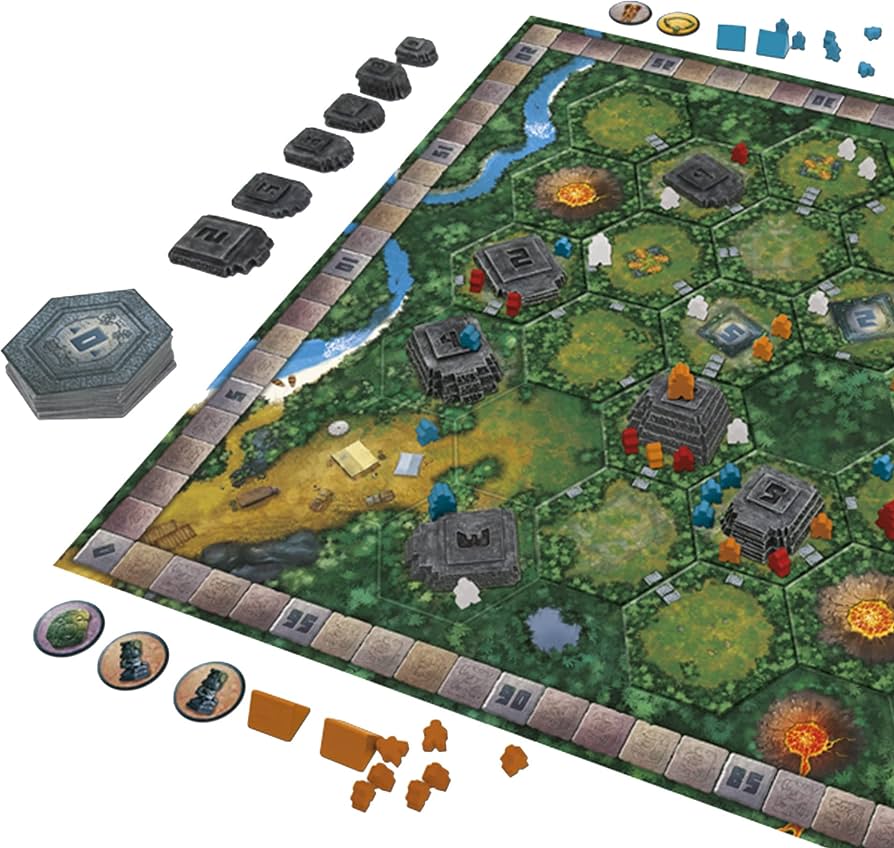
Tikal
1999’s Spiel des Jahres winner from Ravensburger/Rio Grande Games is a turn-based game in which players explore the jungles of Central America looking for ancient treasure and unearthing buried temples. The game is easy to learn and fun to play but deep enough to provide a ton of replay value.
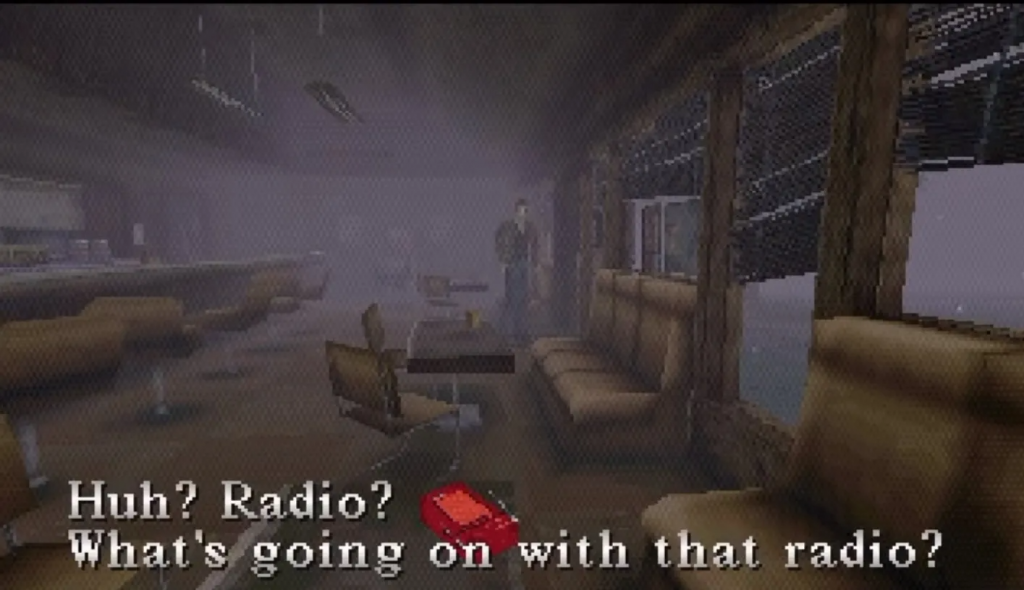
Silent Hill
Players going into Silent Hill in 1999 expecting a Resident Evil clone were in for a shock. What they got was a nightmare horror game which was much more cerebral and terrifying, with fully 3D environments, Dutch angles, and a soundtrack from Akira Yamaoka that would leave you unsettled for days. Nothing in Resident Evil could ever match the panic of Silent Hill’s first alleyway confrontation, nor the dread when your character immediately says “I should go check that alleyway again” five minutes later. Silent Hill is a game where you’re glad when a door’s handle is broken and the room beyond inaccessible – that’s one less nightmare to confront. Silent Hill is one of the scariest games ever made and with its two sequels set up a trilogy of horror games without equal.
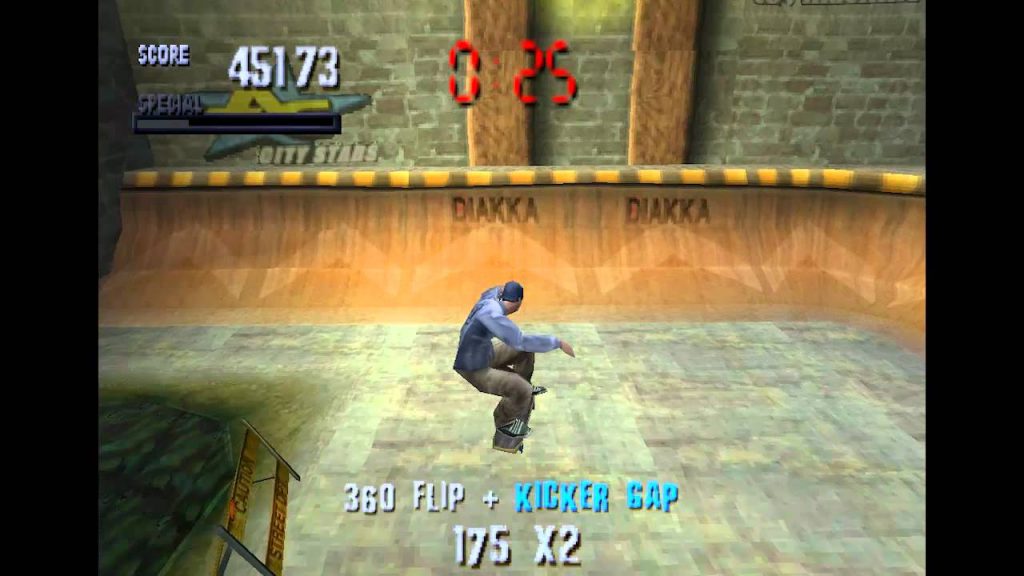
Tony Hawk’s Pro Skater
You know a game is special when it not only has crossover appeal to a large audience but it also massively changes another industry. Tony Hawk’s Pro Skater in 1999 is a game which single-handedly revived American interest in skateboarding, made Tony Hawk a superstar, and also made everyone aware of the band Goldfinger. It’s an all-timer and it’s still a blast to pick up and play a level two decades later.
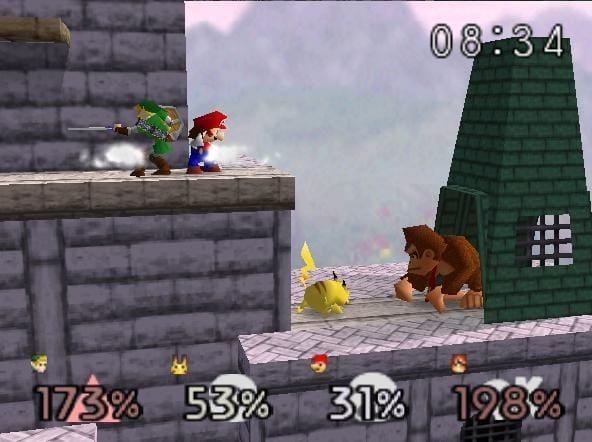
Super Smash Bros.
In 1999, Nintendo released a fighting game. HAL Labs’ Super Smash Bros. was a bit of a stealth project – creator Satoru Iwata, knowing Nintendo was never going to greenlight work on a game where Mario, Link, Samus, and Donkey Kong fight ahead of time, made the prototype without telling anyone and then when he finally showed it off, they approved. Smash Bros. combines the novelty of smashing your favorite toys together with a fun, hectic, innovative fighting system that plays well both as a party game and a more serious fighting game.
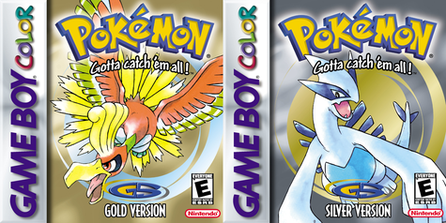
Pokémon Gold/Silver
Pokémon Gold/Silver isn’t just a great sequel, it also replaces the original game, incorporating its map and original list of monsters. Pokémon Gold/Silver does everything the original game did, but better, including adding a cool final boss – the main character from the first game. It’s the best game to release on the original Game Boy and a fitting send off for the handheld.
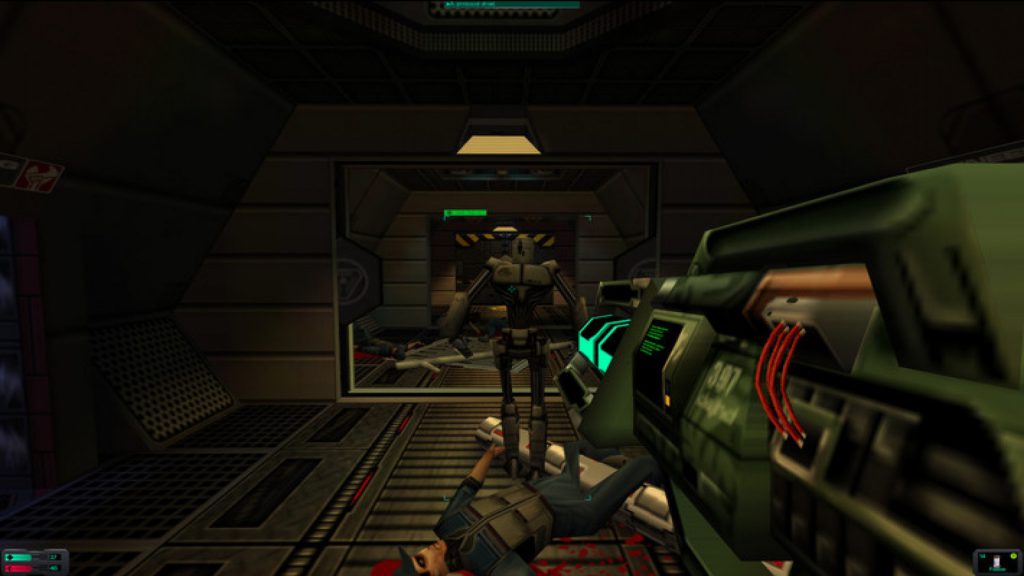
System Shock 2
Irrational Games’ System Shock 2 is a lot of things. It’s a sci-fi action first person shooter. It’s an immersive sim RPG. It’s a survivor horror game. It does all of these things and still manages to pull it off and be pretty great. The game has its warts, but it’s equal parts important and engaging, and the first hour or so (plus the big reveal) are still some of the creepiest moments in gaming.
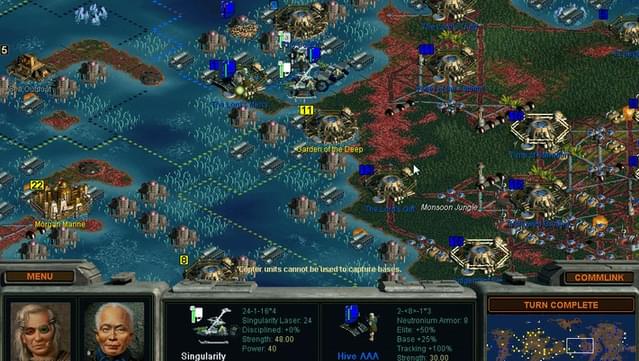
Sid Meier’s Alpha Centauri
Sid Meier’s Alpha Centauri was the next step in the Civilization series, moving the action off Earth and into the unexplored planet Chiron. Players take one of seven factions and explore, expand, exploit, and exterminate their way across the planet, attempting to either wipe out the other factions or achieve a diplomatic victory. It’s a fantastic game and to this day it’s still my favorite 4X game.
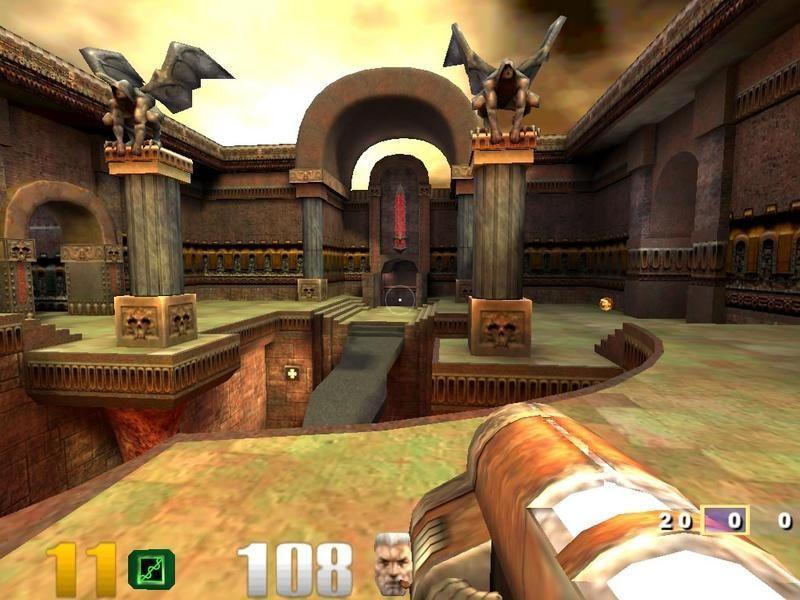
The Arena Multiplayer FPS Genre Takes Off
Large-scale multiplayer FPS play became popular with Starsiege: Tribes in December 1998 but it really exploded in 1999 with the release of two of the greatest multiplayer FPS games of all time.
- Unreal Tournament – Epic leaned in hard on the multiplayer aspects of Unreal, publishing a (mostly) multiplayer-only version with this arena first-person shooter. The game had six game modes, including standard Deathmatch and Capture the Flag, plus the more narrative, attacker/defender-based Assault game mode and the control point-based Domination mode. Unreal Tournament is an all-timer and for my money the better of the two games.
- Quake III Arena – id Software’s contribution was the fully-multiplayer Quake III Arena, which had fewer bells and whistles but its own brand of fast and addictive gameplay which made it a good fit for early esports and competitive events. Quake III is also an all-timer and considered by some to be the best online game of all time.
Arena multiplayer games and multiplayer-heavy experiences would continue to become the norm as internet speeds improved, making it easier for games to support large numbers of simultaneous players.

Planescape: Torment
Often considered one of the greatest RPGs ever made, Planescape: Torment wasn’t a big commercial success but it’s as big a cult hit as you’ll find. Built on the same engine as Baldur’s Gate, Planescape shifts gameplay away from the Forgotten Realms and to Sigil, the City of Doors. Players play the role of an immortal called The Nameless One as he explores the city, other planes, and discovers more about his past lives and the being which made him. It’s an amazing game with a phenomenal story and an unrivaled attention to detail. You can choose how to play your character but if you’ve ever wanted to play a game which makes roleplaying an evil character interesting and rewarding, this is the game for you.
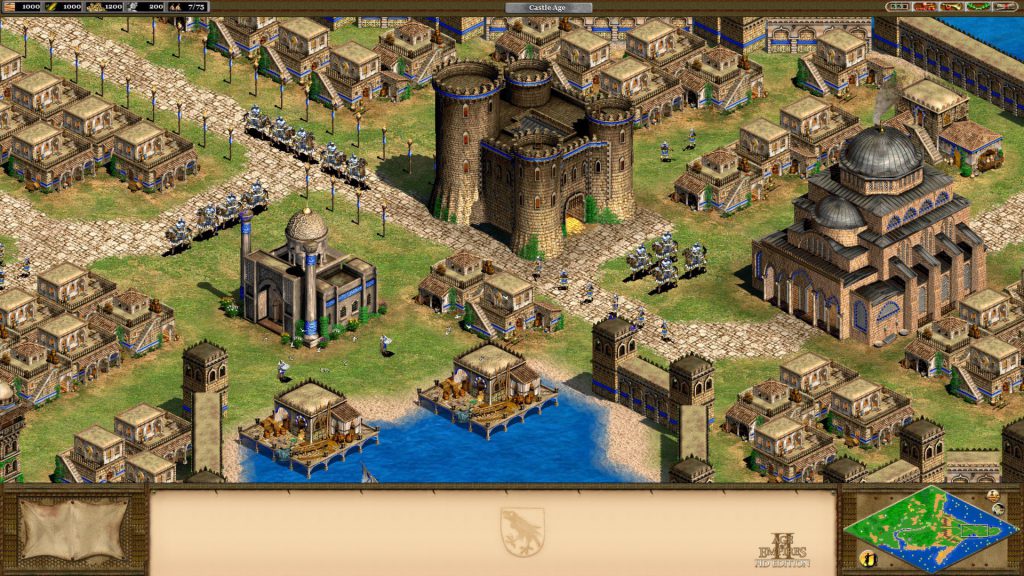
Age of Empires II
Jack Hunter: Age of Empires II is one of the most significant RTS games ever released, only matched by Starcraft in terms of the number of people still playing it now, almost 25 years after the original release. Building on the original Age of Empires, AOE2 has 13 civilizations, each with some unique units and technologies, and covers time between the dark ages and the early Renaissance. The game’s five campaigns were reasonably historically accurate – while it’s still a video game, excessive play taught me enough to be able to skim through high-school history class. The review aggregator Metacritic has AOE2 at 92, which would place it tied for 2nd place all time for RTS games if it actually showed up in their list. Since its release the game has had two remasters: An HD version released in 2013 with three expansion packs through 2016, and a definitive edition released in 2019, which has had five expansion packs, the most recent of which was in late 2023.
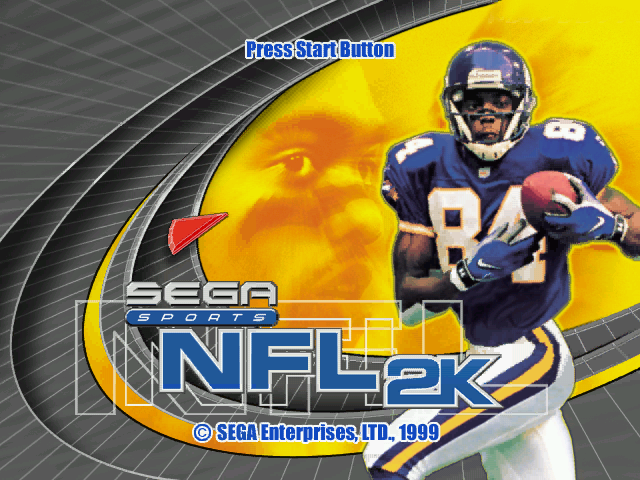
2K Sports Games
One of the biggest hits to the Dreamcast was EA’s refusal to support the console. During contract negotiations, EA demanded exclusive rights to publish sports games on the Dreamcast and Sega refused, leading EA to walk away, and no EA Sports titles would end up on the Dreamcast. That was a problem for a company which had built its brand around older gamers who liked sports and arcade games. Sega instead turned to its internal studios and 2K Sports for sports games on the Dreamcast and the results were actually surprisingly good. NFL 2K, NBA 2K, MLB 2K, and NHL 2K all released in 1999, and provided some much-needed serious competition to EA’s dominance in the space. If you were a sports fan and you had a Dreamcast, the alternatives were good enough that you didn’t feel like you were missing anything.

Dance Dance Revolution
Released for Japanese arcades in late 1998 and on consoles and in Europe and North America in 1999, Dance Dance Revolution was a breath of fresh air for arcades which had been clogged with shooters and fighting games for the past few years. The game’s biggest innovation was its dance pad, which basically let anyone playing get on a stage and show off their moves, making it both a great game socially and a wildly good advertisement for its play. The first release of DDR probably wasn’t its best release, but a new version of the game released pretty much every year afterward until the mid-2010s. It’s one of the best and most innovative arcade games ever made.
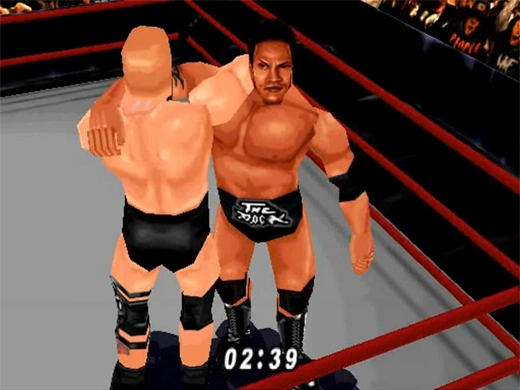
WWF Wrestlemania 2000
1999 was the height of WWE’s Attitude era, when “Stone Cold” Steve Austin was at the height of his popularity, and at that year’s Wrestlemania he’d take on The Rock in the main event. The match would turn the Rock into a star, elevating the former heel to new heights. Ratings for Monday Night RAW were exploding, and the program was putting up numbers that would have been respectable on broadcast television. This also made the WWE a killer license for video games and after the success of THQ’s WCW games – WCW/nWo Revenge and WCW/nWo World Tour, the WWE dropped their deal with Acclaim and had THQ work on their next game. WWF Wrestlemania 2000 was the result.
What made THQ’s wrestling games so special is that they were built on the game engine from Virtual Pro Wrestling 2, which was ideal for the game’s 3D, top-down action. It didn’t necessarily look like a wrestling broadcast, but the upside was that it just played way, way better than Acclaim’s more fighting game-like entries. The game also included a massive amount of Create-a-Wrestler options for players, letting players basically create anyone they wanted who wasn’t in the game. I think I spent as much time creating wrestlers as I did actually wrestling.
Why It Was the Best Year in Gaming
1999 is an insanely strong contender in this competition, and arguably got done dirty by the seeding committee. It’s a year stuffed with a number big releases on the PC, PlayStation, and Nintendo 64. The big honorable mention here goes to the 1999 Dreamcast release of Soul Calibur, which was substantially better than the original arcade game and had a phenomenal career mode. System Shock 2 and Silent gave us completely new and divergent ways to approach survival horror. On the tabletop side, the Pokémon card game was crushing it and Hunter: the Reckoning gave us the coolest White Wolf game. Dance Dance Revolution introduced another arcade revolution and gave us one of the most innovative arcade games of all time. Regardless of your genre or platform preferences, there was something to love in 1999.
This article is part of a larger series on the best year in gaming. For more years, click this link. Have any questions or feedback? Drop us a note in the comments below or email us at contact@goonhammer.com.
